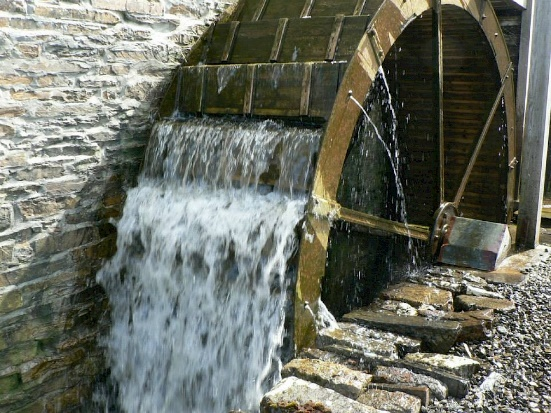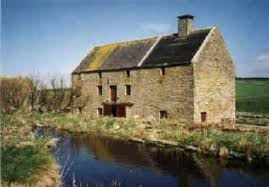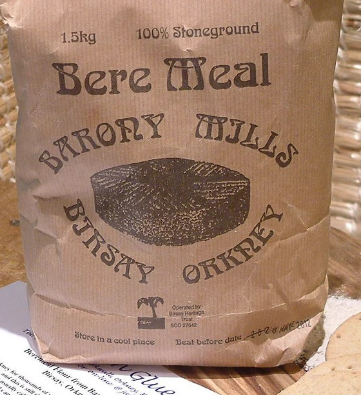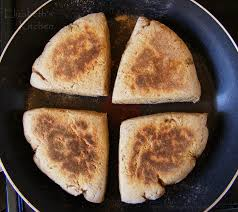By Carolyn McDonald Graf

The word “bannock” probably comes from the Gaelic bunnuch or bannach which means morsel and may come from the Latin word for bread panicium. A bannoch is a thick round bread made from various grains and baked originally on a heated stone, later on a girdle (now called griddle), and even later in an oven. The earliest grain was bere, an early form of barley.
The ancient grain bere is sometimes called the 90-day barley as it thrives in the short season of northern climates. It has been grown in Northern Scotland for centuries, perhaps as early as 2500 BC. Until the late 19th century, bere was the main staple crop in Orkney and Shetland and other areas with low-fertility soil and short summers. It had many uses. Before the development of a cash economy, it was used for trade and land rentals. Bere was used for food for both humans and animals and in brewing. In addition, Bere straw was used as bedding for animals and also for making rope for thatching.

During the 19th century there were as many as 25 mills in Orkney grinding oats and beremeal. Today there is only one mill still commercially producing beremeal. The Barony Mill is a water-powered Victorian mill that has been producing beremeal in the same way since 1873.

Gradually modern grains such as barley and wheat took over and bere nearly became extinct. It has become more popular of late, as it has a distinctive flavor and impressive nutritional benefits. Today it is used in the making of beer and whisky and is being studied as a solution for more sustainable agriculture in the future. It can be found in Scottish groceries and bere bannocks can again be found in Scottish homes.
https://nph.onlinelibrary.wiley.com/doi/full/10.1002/ppp3.10432
But bannocks can be made from other grains including barley, oats and wheat. They are a quick and easy bread to make. Here are two recipes for you to try. One including barley, if you can find it, and one with oats.
Barley Bannocks

4 ½ cups barley flour
1 cup plain flour
2 teaspoons cream of tartar
½ teaspoon salt
1 ¼ cup buttermilk
2 teaspoons baking soda
Stir together flours, cream of tartar and salt. Mix buttermilk and baking soda until it fizzes and pour it into the flours. Beat well to make a soft dough.
Pat out on a floured board to ½” thick. Cut into rounds the size of a tea plate. Flour a hot griddle or frying pan and put in bannock. Cook over low heat until browned. Turn and brown on the other side.
Serve freshly cooked with butter and honey.
http://www.101vegetarianrecipes.com/grain-recipes/barley-bannocks.php
Oat Bannocks
2 cups old fashioned rolled oats
1 cup all purpose flour
1 teaspoon baking soda
¾ teaspoon salt
¾ cup buttermilk
Oil for cooking.
Finely grind the oatmeal in a food processor or blender. In a bowl, add to the oatmeal, flour, baking soda and salt. Mix well. Stir in the buttermilk to form dough. Turn the dough out onto a floured surface and knead lightly. Form into an 8” disc. Heat skillet over a low heat and add a touch of oil. Cook the bannock until nicely browned (about 10 to 15 minutes). Flip and cook on the other side for 10 minutes until browned. Divide into wedges and serve warm with butter and jam. Store in an airtight container at room temperature for up to 3 days.

